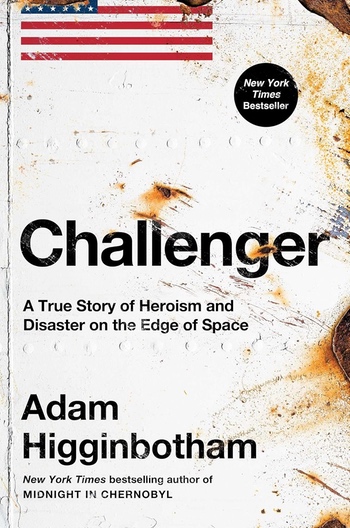 |
By Jeff Foust
Monday, July 22, 2024
Challenger: A true story of heroism and disaster at the edge of space
By Adam Higginbotham
Simon & Schuster, 2024
hardcover, 576 pp., illus.
Publication number: 978-1-982176-61-7
US$35
Nearly four decades later, Challenge remains seared into the collective consciousness of the space community, a reminder of all that can go tragically wrong in space. Within seconds, the shuttle was engulfed in a fireball that destroyed the vehicle and killed all seven astronauts on board. But while the conflagration was instantaneous, it was the culmination of decades of decisions that created a flawed vehicle and processes that allowed it to fly unsafely.
| Higginbotham tells the story expertly, weaving together multiple stories—from the astronauts and their families, from NASA, and from Thiokol—to show how an accident that seemed unthinkable to the public just before January 28, 1986, was indeed predestined. |
That is the perspective offered Challenger: A true story of heroism and disaster at the edge of space by Adam Higginbotham, best known for Midnight in ChernobylIn his book about the Chernobyl nuclear accident, which took place just months after the Challenger accident, he gives a broad view of the forces that, in retrospect, made the accident inevitable.
The book's broad scope takes the reader back to the dawn of the space age and the interest in space planes that offered the promise of airplane-like access to space. That promise led to the shuttle program, as NASA tried to find its post-Apollo footing in an era of shrinking budgets. However, those limited resources led to compromises in design, such as the use of solid rocket boosters that would play a role in the accident.
But, as he describes in the book, it wasn’t just technological issues that led to Challenger. There were flawed decision-making processes and even an unwillingness to listen to concerns, such as those raised by some at Thiokol about how the O-rings on those solid-fuel rocket boosters would lose their effectiveness at low temperatures. There were risky situations with those O-rings and other shuttle systems before Challenger, but NASA pressed on, trying to increase flight speed and demonstrate what the shuttle had been designed to do.
The book itself contains few new revelations or perspectives on the accident and its aftermath. For many readers, the outlines of the story and its details will be a thing of the past. But Higginbotham tells the story masterfully, weaving together multiple story lines—from the astronauts and their families, from NASA personnel, and from those at Thiokol—to show how an accident that seemed unthinkable to the public just before January 28, 1986, was indeed predestined.
The accident was supposed to be a “never again” moment for a chastened NASA, but it happened again just 17 years later with Columbia. This time, it seems, the lessons learned at a terrible price have been preserved, as the shuttle has safely flown the remainder of its missions along with the continued operations of the International Space Station and, more recently, the commercial vehicles that ferry NASA astronauts to and from the station. For future generations wondering how Challenger happened, Higginbotham’s book will be an excellent starting point for the technical and institutional forces that doomed an orbiter and its crew.
Note: We are moderating comments. There will be a delay in posting comments and there is no guarantee that all submitted comments will be posted.
Please enable JavaScript to view the comments powered by Disqus.